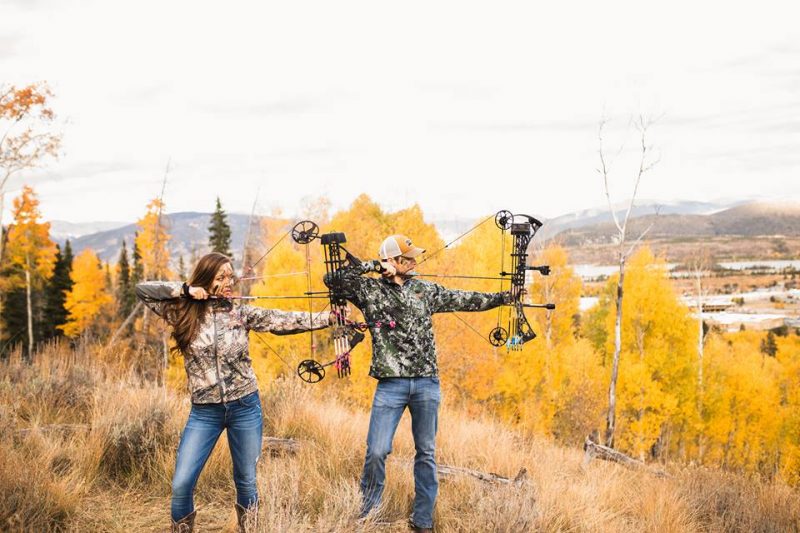
The morning dew is swishing between your every step. The sound of cows chirping in the distance makes your heart race faster than any other moment of the year. You sneak as close as you can and respond back. He lets out a bugle that sends chills down your spine. Game on. OTC Archery Elk can be a very rewarding hunt year after year. The toughest part for the inexperienced or unsuccessful hunter is where to begin. What unit do I hunt? What is the best time of the season to hunt? Do I pack in? Do I use ATV or horses, or my own two legs? What is my drive to be successful? While all of these questions are valid going into a Colorado OTC hunt, the latter is most important. Let me explain.
You can do all the dirty work. From forum reading, the calling of old friends, speaking to wildlife biologists, reading harvest results, and scouting on Google Earth. Everyone nowadays wants fast results without putting in the effort. Why? They rely on luck, i.e. it could happen. “This unit has 35% success, that must mean I will be successful too!” Wrong. Nothing in elk hunting is given; it requires preparation and hard work and only then will your luck fall into place. I will cover this in detail.
Prepare to Hunt
Like many elk hunters traveling into the state, or resident weekend warriors with a heavy work schedule, time is never on their side. How do you maximize your time? Be in the best shape of your life. Be willing to go over that next ridge, across that fallen timber covered drainage, over that 12,000 ft. peak. Hike into spike camp at midnight if it’s necessary. You can sleep 48 other weeks of the year. Now is the time to get to business and enjoy living amongst the mighty Wapiti in the greatest month of the year.
Elk can feed faster than we can catch them. Put in the scenario of rutting bulls and it’s more than a footrace. Are you going to spend the money and time preparing just to give up because it is too tiring? Or are you going to have an ultimate passion for success that only a downed bull and 150 lbs. of pack out to your truck 10 miles away will suffice? There are those who dream of killing an elk, those who dream of killing a trophy bull, those who hope for elk to luckily stumble upon them in the woods or those who know where the elk are and get it done year after year.
They say 10% of elk hunters kill 90% of the elk. Why? Their drive. It’s elk on the mind all the time. Constantly learning different situations and the outcomes, both good and bad. Studying elk behavior and seasonal staging areas for a particular unit can allow for knowledge worth its weight in gold. While I could go on for days about calling, decoys, equipment, or scouting one of the most important aspects of elk hunting is a burning fuel inside you that will drive you to your OTC success.
 Success…How?
Success…How?
The process of finding an area to hunt begins with narrowing it down. Don’t get too caught up in unit knit-picking as every unit in Colorado holds plenty trophy quality elk. Pick one that you believe in and scout it like you are the CIA. Know exactly where elk like to bed, feed, rut, and travel. If you can find these areas, the hidden pockets are always there. Even in extremely hunted areas where bulls are quiet, finding a hidden bowl or timber run that elk go to for safety is a game changer. Biggest key: get away from the roads, as far as you can. Pack enough food and necessary items to make it through your desired time frame and get away from it all.
While backcountry hunting is becoming more and more popular, it is not for everyone and you wean out a large percentage of hunters. Those who do make it back there, generally, have an idea why they are that far back. The elk are there. Even if they bump them around, finding the pockets that see little pressure is a great place to start. Thick, cool, north-facing slopes paired with meadows and plenty of water is an elk’s mecca. If you get back there, know there are elk around. Be patient. Don’t go stomping around the mountain searching for them. Chances are they are really close in thick cover, and if you are covering land constantly they will see you long before you see them.
For example, last year we knew where the elk were hanging out and set up mid-morning for a sit on a meadow edge near a wallow. After a 4-mile hike in that morning from spike camp, I started to doze off as the sun grew warmer. Some 15 minutes later I awoke staring eye to eye with 15 cows and a satellite bull who were less than fifteen yards away! Unable to grab my bow, I simply took the high road by remaining still and letting them feed through unscathed. I took this as a learning opportunity of the value of being patient and letting the elk be elk instead of drudging through their territory.
As luck would have it, we were able to arrow a bull within 100 yards of the meadow three hours later. Finding these hidden gems, whether the elk are talking or not, can make a huge difference for success. A rule of thumb is it takes one year to find an area, one year to learn an area, and by year three it can be mastered. While quick, lucky results have great variability, hard work and preparation can lead to the hunt of a lifetime. You may never know when that cunning old bull stumbles into your path. Be ready and focus on the wind and stay patient. Put in the work and luck will fall into place!


 Success…How?
Success…How?











